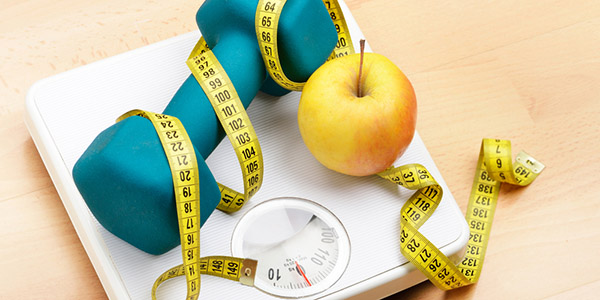Top Five Worst Foods You Can Eat
Queen of Moderation
I know what you’re thinking. I think it myself all the time. “Not another one of those food police types telling me what I can’t eat.” It’s rare that you’ll hear me say a particular food has no place in a healthy diet. I am the queen of moderation. As long as your “dietary vices” aren’t contributing more than five to ten percent of your dietary intake, no sweat.
Spend Wisely
But I do believe that an informed consumer is a wise consumer. Nothing is truly off-limits. But knowing which foods and ingredients are the worst for health can help you decide where you’d like to “spend” your vices and which foods simply aren’t worth it.
Think of your body as a bank account. To keep the account balance healthy, you need to make regular deposits. It’s OK to make the occasional withdrawal. Too many withdrawals, however, and you’re headed for overdraft fees.
With health, overdraft fees come in the form of fatigue, excess body fat, and aches and pains. In the worst case, small overdraft fees add up to a large penalty. This might come in the form of heart disease, cancer, or diabetes.
Avoid Large Penalties to Your Health
Don’t worry about the occasional overdraft fee. Food is to be enjoyed. A piece of cake or a French fry now and then never killed anyone. To avoid a large penalty, however, keep the following five foods and ingredients out of your diet. (Next week we’ll cover foods and ingredients six through ten of the Top Ten Worst Foods and Ingredients to Avoid.)
The Top Ten Foods and Ingredients to Avoid: One through Five
Soda
Soda is the frequent target of healthy eating campaigns. This is not arbitrary. There is absolutely nothing of any nutritional value in soda. Worse yet, our bodies aren’t particularly good at registering liquid calories, like those in soda.1
When we take in sugary, solid calories (think jelly beans), we typically end up eating less later in the day to compensate. People do not eat less after they’ve taken in excess liquid calories. With soda, you take in extra calories, but your body doesn’t even know it!
Soda makes up between 10% and 14% of the calories consumed by the average American. That’s hundreds of sugary, liquid calories per day – fifty gallons of soda per person per year in the US! No wonder two-thirds of Americans are overweight or obese. It’s time to drop the pop habit.
Hydrogenated Fat
For years, health experts admonished Americans to eat less saturated fat. Butter was a target. Margarine was promoted as the healthy option.
The only way to make vegetable oil into margarine is to process it with hydrogen and a metal (catalyst) under high pressure. This is hydrogenation. This creates hydrogenated fats, which sometimes are called trans fats.
When you replace saturated fat with polyunsaturated vegetable oil fats, this does lower heart disease risk.2 But not if the vegetable oil hydrogenated! In fact, hydrogenated fat is far worse for health than saturated fat. Some saturated fat can be part of a healthy diet. Hydrogenated fat cannot.
Hydrogenated fats are linked with an increased risk of heart disease – the number one killer in the US. For every 2% increase in energy intake from trans fat there is a 23% increase in cardiovascular risk.3 If that’s not motivation to avoid hydrogenated fats (read labels), I don’t know what is!
Synthetic Yellow, Red, and Blue Dyes
If I want my food to be yellow, orange, purple, red, green, and blue, I’ll stick to bananas, mangos, eggplant, apples, broccoli, and blueberries. Unfortunately, most processed food companies don’t feel the same way. And given that 90% of all food dollars in the US are spent on processed food,4 that’s an awful lot of synthetic dye we’re eating.
Consider Yellow Dye #5, which also goes by the names tartrazine, FD&C yellow No. 5, yellow lake, and yellow oxide. Yellow #5 appears in products such as candy, yogurt, frozen desserts, soda, sports drinks, snack chips, salad dressing, and even medications.
Tartrazine causes the most allergic reactions of all the colorants known as azo dyes. It may be particularly likely to cause problems in people with asthma or aspirin intolerance or allergy.5 Allergy symptoms such as hives and wheezing can occur from ingestion (eating) or topical (on the skin) exposure.
According to the Environmental Working Group, a commonly used red colorant called D&C Red 28 Aluminum Lake shows strong evidence of neurotoxicity (toxic to nerves) and may be cancer-causing.6
High-Sodium Processed Foods (Soups, Microwave Dinners, and More)
We’ve all heard how important it is to reduce our sodium intake. The reason goes far beyond blood pressure concerns. From worsening of metabolic syndrome to kidney damage and heart disease, sodium is public enemy number one.7
The most amazing part of the sodium picture is how easy it is to avoid. I was working on a menu project recently. I was tasked with creating menus to meet nutrient intake guidelines.
When I calculated the sodium in my menus, I found, much to my dismay, that the levels were very low. I even paused to momentarily look up the minimum amount of sodium needed for good health. Imagine that…a diet so low in sodium. The reason why sodium was so low in my menus? No processed food!
The average American gets 10 to 12 grams of sodium per day. This is about 5 to 6 times the highest recommended intake (2.4 grams, or 2,400 milligrams) for good health! And it’s all due to processed food.
Cured, Smoked, and Salted Meats
There are two main reasons to steer clear of cured, smoked, and salted meats. One is sodium (see #4 above). The second reason is because these foods contain carcinogens. Carcinogen is a fancy way of saying, “causes cancer.”
Compounds called nitrosamines and nitrosamides are formed during the meat curing, smoking, and salting process. They cause cancer.8-9 No ifs ands or buts. If you are interested in avoiding a known carcinogen in the foods you eat, give processed meats a pass.
For article references visit http://www.appleboost.com/newsletters/2010/05/18/issue-24-top-five-worst...
-
Free Quick Weight Loss Diet Plan
Weight Loss Diet and Exercise are the only solutions to lose weight. T
-
10 Things You Must Know About Fat Loss
Ever wondered why there are so many diets around out there and people
-
Walking to Lose Fat Fast
People who want successful weight loss often think about reducing t
-
Choosing Your Weight Loss Shakes
When you are selecting the ideal protein shake for yourself then there
-
Dont Go It Alone!
Theres an old story about a child trying to move a heavy stone whi
-
If We Are Eating 99 Fat Free Why Are We 99 Fat
Unfortunately, obesity is reaching epidemic proportions, with over 60%
- DON'T MISS
- 5 Ways To Lose Fat Fast
- Laxatives For Weight Loss
- Winning The Mental Game Of Weight Loss And Weight Control
- How you can Cope with Emotional Eating
- Can Weight Loss Be Possible Through Hypnosis?
- 3 Very Simple Weight Loss Tips For Getting rid of Those Stubborn Pounds
- Quick Weight Loss Tips - How Can I Lose Weight
- Twelve-Day Grapefruit Diet
- How to Make Healthier Choices While Eating Out
- Get a Flat Stomach by Tomorrow




